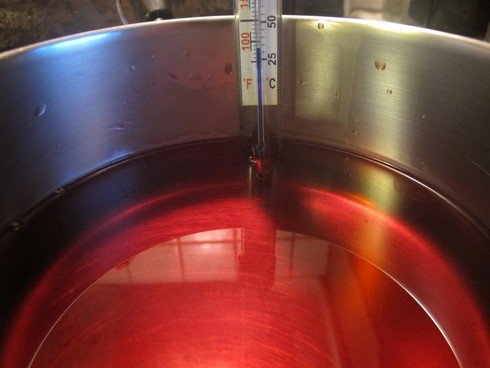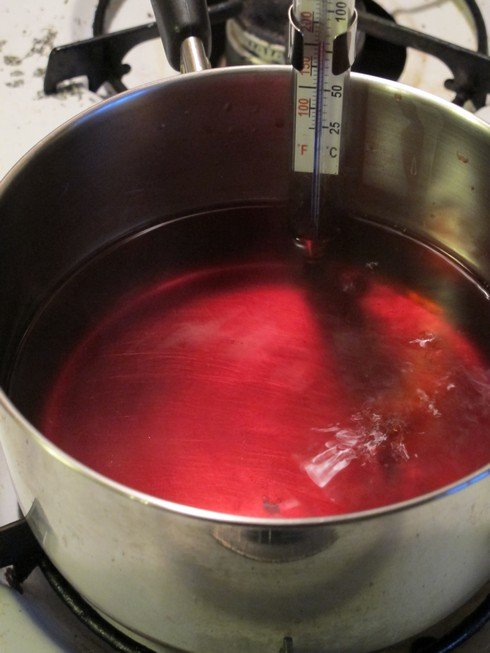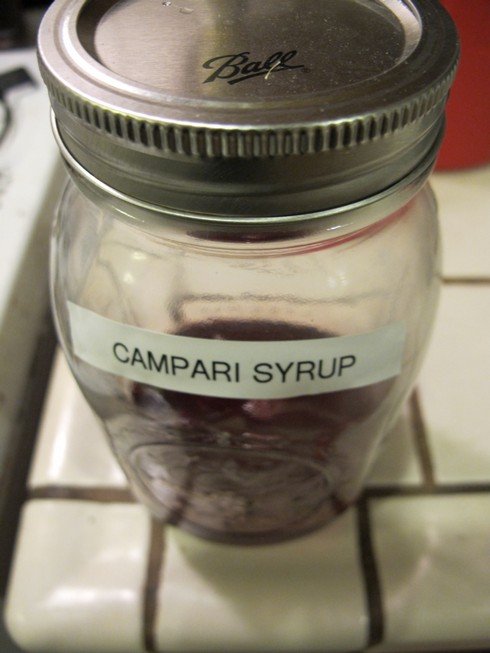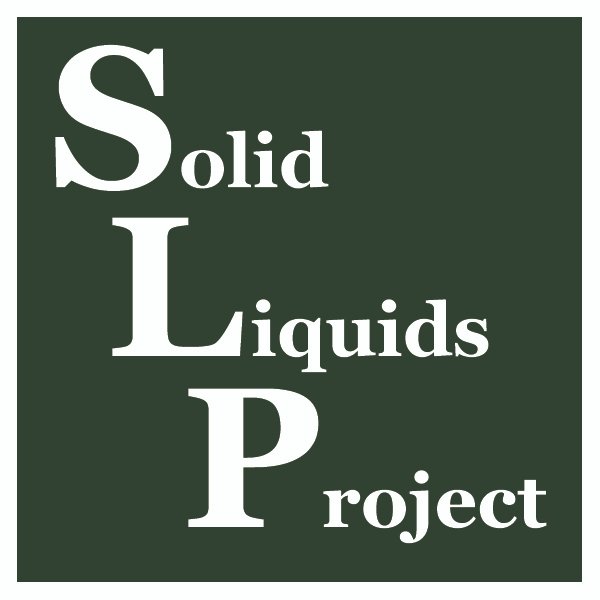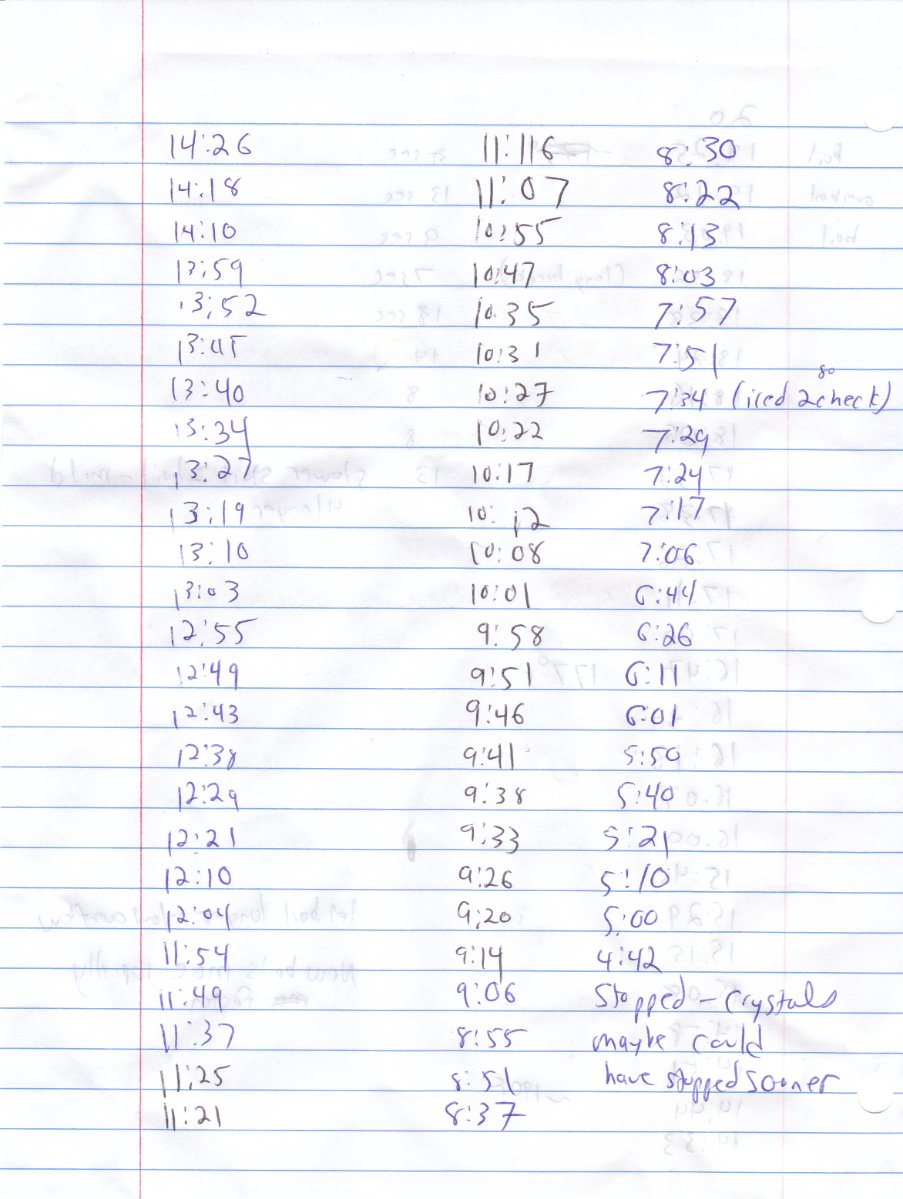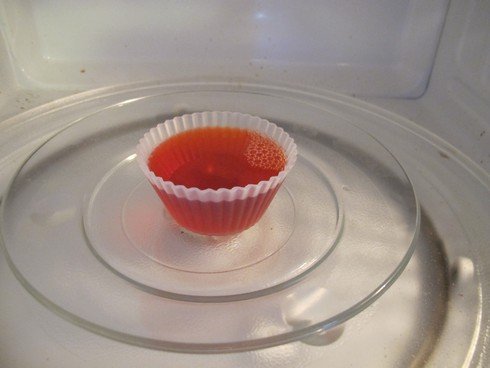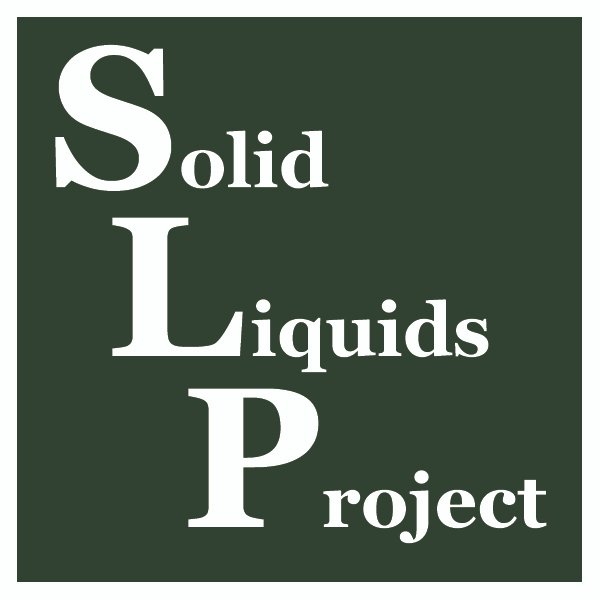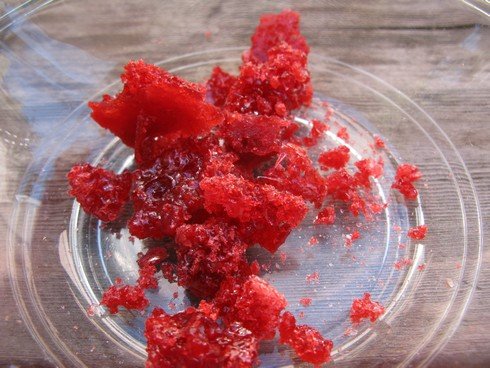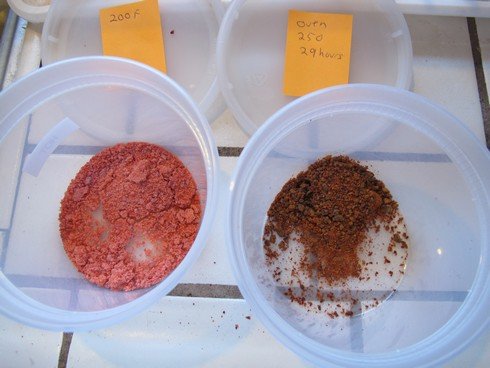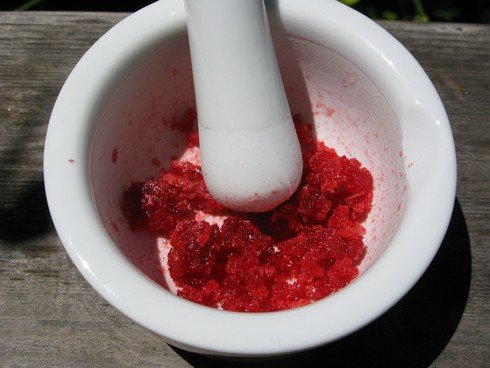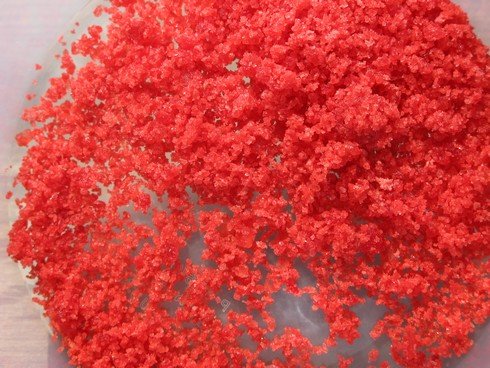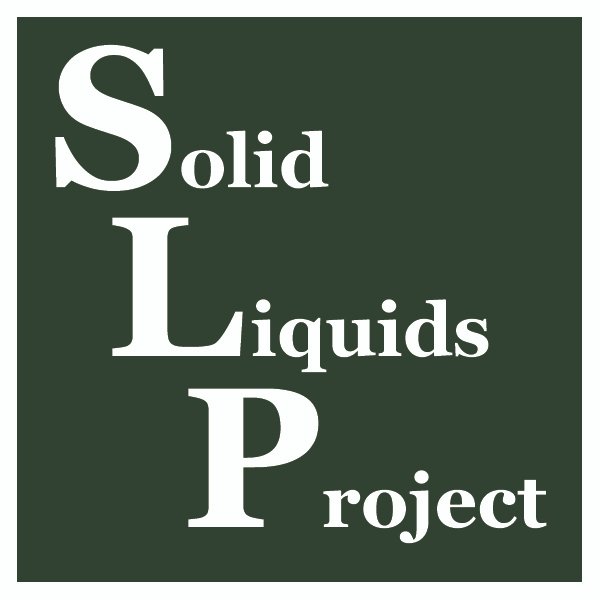 In the last post in the Solid Liquids project, I used dehydrated Campari to make a non-alcoholic Campari & Soda.
In the last post in the Solid Liquids project, I used dehydrated Campari to make a non-alcoholic Campari & Soda.
Then it occurred to me that for that purpose there was no need to dehydrate the liqueur completely. I could just burn off the alcohol and have a non-alcoholic syrup.
So that's what I did. I filled a pot with Campari and took its temperature with a candy thermometer when heating it. Alcohol boils at 172F as opposed to 212F for water, so I tried to keep the temperature between the two.
It started to bubble around 175 and I could smell alcohol vapor. It began boiling around 183F. When it got to 189F it began to look thicker, as plenty had boiled off.
After an hour total I cooled the liquid to check the volume and found it to be reduced by 50 percent. And since the alcohol content of Campari is 24 percent alcohol hopefully all the booze and some of the water burned off as well.
After cooling and storing it, I made another non-alcoholic Campari & Soda. I added about an ounce of Campari syrup to about 3 ounces of soda water.
It's good, probably better than the powdered liqueur version. But campared with regular Campari & soda, real Campari still tastes better. Again the real deal has more of an orangey flavor, so the non-alcoholic version can use an expressed orange peel added to it.
I'm guessing that the volatile citrus orange (oil?) in Campari burns off in the cooking and that's why it's not present in the syrup/solid version.
So: What else should I use this Campari syrup for?
Update: I just remembered that I saw Campari syrup on the menu at Nightjar in London. I'm not sure if their syrup is the same thing or something else, but it's in two drinks from the summer menu (forgive the funky formatting, it's their font):
bRick lane cocktail
g’vine floRaison gin
campaRi syRup
dolin dRy veRmouth
fResh squeeZed mandaRin
chambeRyZette jellybaRnaRd’s bRew
nut-infused chaiRman’s ReseRve Rum
nightjaR faleRnum
caRibbean bitteRs
campaRi syRup
fResh squeeZed lime
The Solid Liquids Project index is at this link.
